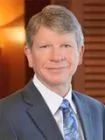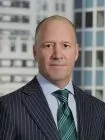On June 13, 2011, the United States Supreme Court, in a 5-4 opinion delivered by Justice Thomas, held that an entity that does not have ultimate authority and control over the content of a statement or whether and how to communicate the statement does not "make" the statement for purposes of liability under Rule 10b-5. Janus Capital Group, Inc. v. First Derivative Traders, 564 U.S. ---, No. 09-525 (U.S. June 13, 2011). The Janus decision limits the scope of primary liability for violations of the antifraud provisions of the federal securities laws.
At issue in Janus was whether a mutual fund investment adviser and administrator can be held liable for participating in the dissemination of allegedly false statements contained in its client mutual funds' prospectuses. Plaintiff in the case was a shareholder of Janus Capital Group (JCG) who sued JCG and its wholly owned subsidiary Janus Capital Management (JCM), an investment adviser to the Janus family of mutual funds, which are organized in a business trust known as the Janus Investment Fund. Janus Investment Fund issued prospectuses to investors describing the investment strategy and operations of its mutual funds. Plaintiff claimed that the prospectuses misrepresented that JCG and JCM would implement measures to curb market timing practices in the Janus family of mutual funds.
Following dismissal of plaintiff's complaint by the District of Maryland and reversal of that decision by the Fourth Circuit, the Supreme Court granted certiorari to address whether JCM can face primary liability in a private civil action under Rule 10b-5 for false statements contained in Janus Investment Fund's prospectuses. The Janus Investment Fund was a legally distinct entity controlled by a separate board of trustees. Given the separate corporate structure, the Court held that JCM did not "make" the material misstatements because it did not have the "ultimate authority" over the prospectuses, which were issued not by JCM but by Janus Investment Fund.
The Court's holding is important in a number of respects. Noting that the private right of action under Rule 10b-5 was implied by the Court and therefore should not be judicially expanded, the decision formulates a new test limiting liability under Rule 10b-5 to persons or entities that actually "speak":
For purposes of Rule 10b-5, the maker of a statement is the person or entity with ultimate authority over the statement, including its content and whether and how to communicate it. Without control, a person or entity can merely suggest what to say, not "make" a statement in its own right. One who prepares or publishes a statement on behalf of another is not its maker.
The Court gave the example of a speaker and a speechwriter, stating that even though a speechwriter may draft a speech, the content is within the control of the speaker who delivers the speech—and the speaker would be the only actor subject to primary liability under Rule 10b-5 for making a materially false or misleading statement. The Court held that to interpret "make" more broadly would undermine its decision in Central Bank of Denver v. First Interstate Bank of Denver, 511 U.S. 164 (1994), which eliminated aiding and abetting liability in private lawsuits brought pursuant to Section 10(b) and Rule 10b-5.
The Court thus rejected the position, advanced by the U.S. government in amicus briefing, that "make" should be defined as "create." The Court held that such a construction would undermine the Court's other recent decision in Stoneridge Investment Partners v. Scientific-Atlanta, 552 U.S. 148 (2008), where the Court held that a secondary actor who is involved in manipulative or deceptive conduct but does not actually speak cannot be held liable under Rule 10b-5. Furthermore, the Court noted that the expansive definition of "make" advanced by the government and plaintiff would read into Rule 10b-5 a theory of liability that Congress already had created expressly elsewhere, in Section 20(a) of the Securities Exchange Act of 1934.1
The Janus Court also discussed the extent to which attribution is relevant for primary liability under Rule 10b-5. While stopping short of requiring explicit attribution for liability to attach, the Court nonetheless held that express or implicit attribution of a statement is "strong evidence that a statement was made by, and only by, the party to whom it is attributed." In a footnote, the Court noted that a lack of explicit or implicit attribution of the statements at issue to JCM meant there was no indication that Janus Investment Fund was quoting or otherwise repeating a statement originally "made" by JCM.
In a footnote, the Court explained that the "directly or indirectly" language of Rule 10b-5 did not modify the manner in which a statement was made, but rather applies to the means by which a statement was communicated to the recipient. The Court did not define the scope of an indirect communication since there was no suggestion that JCM said anything: "More may be required to find that a person or entity made a statement indirectly, but attribution is necessary."
Justice Breyer authored the dissent, joined by Justices Ginsburg, Sotomayor, and Kagan. The dissent took issue with the majority's limitation of the word "make," arguing that there is nothing in common English or earlier decisions that would limit the definition to those with the "ultimate authority" over the content of a statement. The dissent argued that the majority expands Central Bank's proscription against secondary liability to primary violators of Section 10(b). According to the dissent, among other actors, board members, senior management, and large investors, any of whom may not have spoken but nonetheless participated in the "making" of a statement (as the dissent would interpret the term), now may escape private liability under Rule 10b-5. The dissent highlighted a number of cases in which lower courts have found actors primarily liable despite not having the "ultimate authority" over issued statements. While the majority opinion expressly stated that it was not addressing whether and in what circumstances statements would qualify as "public," it is arguable that unattributed statements made through conduits, such as securities analysts, would fall outside of the definition of "make" as the term has been defined by the Court.
With its decision, the Supreme Court has made clear that private plaintiffs pursuing claims of securities fraud under Rule 10b-5 must do far more than allege that a defendant had a role in the drafting or creation of a misstatement. Defendants cannot be liable unless they have the "ultimate authority" over a misstatement, a high hurdle to establish liability against those who do not control the dissemination of information.
Footnotes
1 Importantly, while Janus provides clarity as to the scope of primary liability under Section 10(b), it does not address potential claims against officers, directors, and certain shareholders as controlling persons under Section 20(a).
The content of this article is intended to provide a general guide to the subject matter. Specialist advice should be sought about your specific circumstances.



